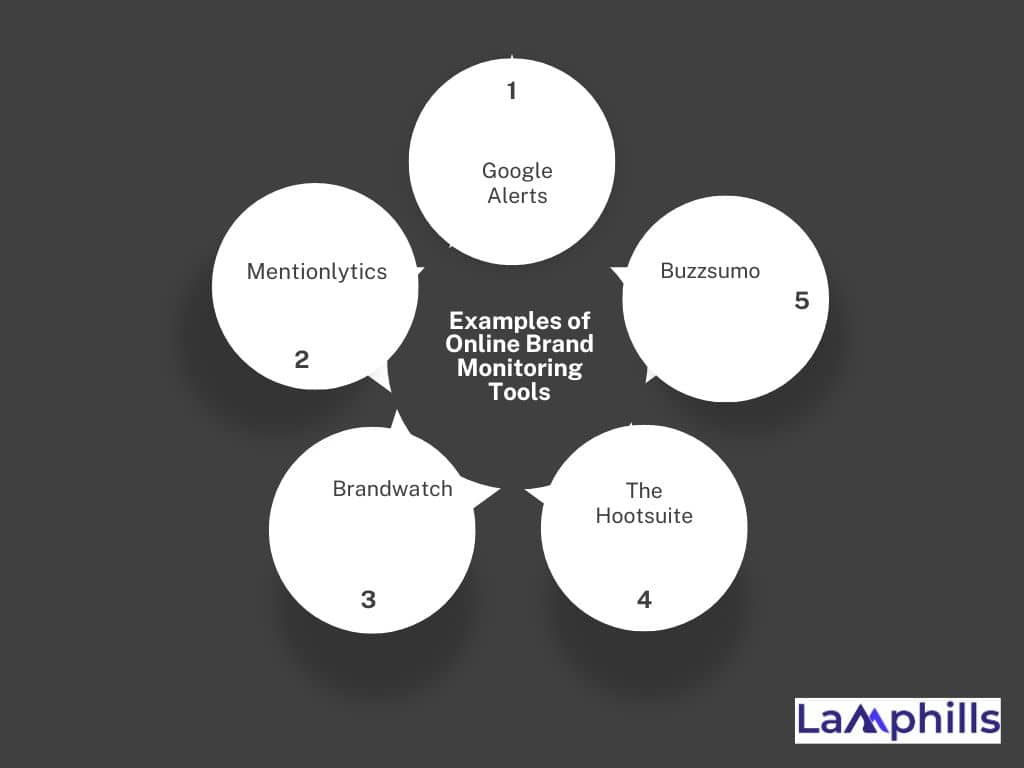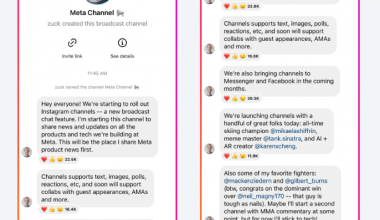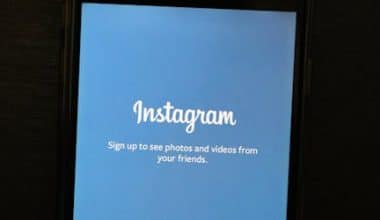Companies, organizations, and corporations desire to grow without suffering losses in the expanding market. However, online brand monitoring tools allow you to keep an eye on your brand from any location and provide you with marketing tactics for it. Examining how my brand is being used or abused on the internet, on e-commerce platforms, and on social media is part of online brand monitoring. It may offer insightful information that will help your marketing tactics. Here is all you need to know about online brand monitoring.
Key points
- Online brand monitoring involves tracking mentions, conversations, reviews, and sentiments about a brand across various digital platforms like websites, blogs, social media, review sites, forums, etc.
- Key components include keyword tracking, influencer monitoring, social media monitoring, review tracking, competitor analysis, and sentiment analysis.
- Popular brand monitoring tools mentioned are Google Alerts, Mentionlytics, Brandwatch, Hootsuite, and BuzzSumo. Benefits of online monitoring include resolving customer issues, crisis management, identifying opportunities, increasing marketing ROI, building customer relationships, managing reputation, and monitoring competitors.
- Elements to monitor include competitors, brand/product names, industry keywords, hashtags, search results, social media, podcasts/videos, owned media, and customer feedback data.
- Steps to start include setting clear objectives, choosing the right tool, defining tracking criteria, regularly reviewing reports, and acting on the insights.
Components of online brand monitoring
Online brand monitoring involves keeping an eye on a variety of digital platforms to assess how a brand is perceived and performing online. This procedure entails keeping an eye on websites, blogs, forums, social media accounts, and other online places where brand-related conversations may take place. The following are the main elements of online brand monitoring that I will list that can help you monitor your brand:
- Keyword tracking is keeping an eye on certain terms associated with a company, its goods and services, or its sector to see where and how they appear in conversations. This gives you easy access to monitor your brand.
- Tracking mentions from influencers that have the potential to greatly affect a brand’s reach and image is known as influencer tracking. Influencers have a great role in making your brand grow. A good influencer (a journalist) can give your brand a good name.
- In social media monitoring, the brand is monitored for mentions, conversations, and comments on Facebook, Instagram, LinkedIn, and other social media sites. My brand was aided by this social media observation, which made it easy for me to monitor my brand.
Read Also: Elevate Your Brand’s Marketing Strategies With PR Boxes
- Monitoring reviews and ratings on websites like Yelp, Amazon, Google Reviews, and other review sites specialized to a certain industry. This makes it easier for you to get what you are looking for quickly when monitoring your brand online
- Analyzing competitors entails comparing and tailoring a plan based on observations of their online behavior and presence. This component can help you monitor your brand. However, just have the best monitoring tool for your brand
- Sentiment analysis involves examining the tone of voice used while mentioning a brand to determine if it is seen positively, negatively, or neutrally. This component helps you get information quickly when monitoring your brand online.
- Web Monitoring brand mentions on the internet, such as blogs, news sites, and other online publications. Web monitoring helps you monitor your brands easily and get the complaints of your customers quickly.
The most important part that kept my brand growing was keeping an eye on things to find out how customers felt about my brand and whether there had been any instances of intellectual property rights being violated. Monitoring your brand is the best option to grow it.
Examples of Online Brand Monitoring Tools
These are a few examples of brand monitoring solutions that you might look at. As a brand owner that I am, the following tools listed below are what I used in monitoring my brand online, which is also good for monitoring your brand. There are:
#1. Google Alerts
You may easily search the web for brand references by using Google Alerts, a brand monitoring tool. But what I notice about it is, that since it’s free and not too complicated, all this program truly does is send you alerts whenever your brand is mentioned; no more analysis is offered.
#2. Mentionlytics
Mentionlytics offers competition tracking and influencer discovery as extra services, and it assists you in identifying online and social media mentions of your business. Real-time updates make it simple to maintain control over how people perceive your brand.
#3. Brandwatch
The brand monitoring program from Brandwatch provides thorough scanning of discussions about any brand or subject on all digital platforms, including social media, with an emphasis on textual content. This well-liked brand monitoring tool can help you watch brand mentions and offers real-time data analysis to assist in creating client personas, among other things.
#4. The Hootsuite
All things considered, Hootsuite is a social media management tool. It provides you with a range of social listening capabilities in addition to post-scheduling and link-building. What I notice about it is that It lacks the analytics features of a comprehensive brand monitoring tool, though, as its main purpose is social monitoring.
#5. Buzzsumo
I made use of this tool mostly. Several capabilities, such as domain alerts, which notify you when a brand mentions something happening on a specific domain, and link alerts, which notify you when a backlink is posted to your website, allow you to watch your brand across digital touchpoints with this brand monitoring tool. To assist you in monitoring your brand online and across social media platforms, it also offers real-time mention notifications along with many more features.

What makes online brand monitoring crucial?
Maintaining a watchful eye on each connection has numerous advantages and will provide feedback and information that are critical to enhancing brand awareness, sentiment, loyalty, and recognition. Having a solid understanding of the dynamics of the marketplaces in which you operate also makes it easier to stay relevant. The following are a few reasons I encountered when monitoring my brand online: However, the list below explains why online brand monitoring is important:
#1. Resolving complaints from customers
A wonderful method to identify and address client pain issues is through brand monitoring. Addressing the concerns of the customers, enabled me to address the problem with my brand. You’ll discover the parts of the buying process that consumers have found challenging if you pay attention to what they have to say about you. Perhaps the way you deliver is by encouraging people to submit feedback forms. Knowing this and taking appropriate action, as a result, will come from effective brand monitoring.
#2. Crisis management
Reputational crises can sometimes arise and require immediate attention. As a brand owner, if I miss my chance, my brand’s sentiment may suffer in a way that will be difficult to recover from. To avoid this, you have to act fast to solve your brand issues. You can spot these trending moments as they happen and take action before things get out of hand by continuously and real-time monitoring your online brand. You will be able to determine whether a crisis is about to unfold by monitoring brand mentions and pertinent keywords not only on social media sites but also on consumer feedback forms and other places.
#3. Making use of opportunity
You can spot chances and take advantage of them more effectively when you keep an eye on your brand. You can learn more about what your customers desire more quickly by identifying emerging subjects that tie in with your brand values and developing products or services around them. Opportunities can arise from two sources: seeing whatever your clients are saying about or keeping an eye on the brands of your competitors to see whatever their clients are losing out on.
#4. Increasing the value of your money
By employing brand monitoring as a brand owner, I can assess the effectiveness of my marketing and identify fresh subjects to write about to persuade both present and potential consumers to interact with my brand. You may use any information that comes to light, including answers to marketing campaigns, preferences for particular product features, and more, to improve your messaging, create more focused product lines, and more. Your audience will respond to your work more favorably and there’s a greater chance that you will maintain and increase your revenue if you can gather and apply more information.
#5. Establishing connections with customers
You’ll identify chances to interact with them when you pay attention to what your clients—and future clients—have to say about you. This could entail bringing to light user-generated content (UGC) from brand-loyal supporters and fans that you can promote and distribute on your platforms, or it could entail fostering a stronger sense of community by actively participating in discussions that are taking place about you rather than with you. Proactively keeping an eye out for brand mentions and conversations is crucial.
#6. Establishing the reputation of your brand
It takes time, and effort, and never ends to build your brand’s reputation, but unless you regularly track online sentiment, you won’t be able to tell if you’re moving in the right direction. This part made me constantly keep my eyes on my brand. You can follow the evolution of your brand over time and assign measurable values to things like reputation by putting in place a brand monitoring plan.
#7. Staying aware of Your Competitors
Beyond simply keeping an eye on your own brand, you may also start keeping an eye on the brands of your rivals. This enables you to observe what issues your competitors’ clients are bringing up, identify problems you can help with, and figure out how to build a reputation for your brand that is higher than that of your competitors. This made me grow in my yogurt brand. When you include competitor brand mentions and the conversation surrounding their firm, your competitive analysis will go deeper.
What I should monitor online for my brand
It’s crucial to know what to watch out for as well as where to focus your attention. The following is what I did when monitoring my brand online: You can monitor the following to get a more comprehensive picture of the perception, comments, and voice of your brand:
#1. Competitors
To understand how your outcomes compare to those of the competition, competitor monitoring can be a helpful tool. You may monitor not just your own brand name but also that of others. To assist you in understanding your share of voice and how the sentiment surrounding your brand as a whole compares to that of your closest competitors, the majority of brand monitoring solutions provide some type of competition benchmarking.
#2. Hashtags, Product names, and Brand mentions
The most crucial thing to pay attention to is also the most apparent. Keeping an eye on your brand mentions will allow you to see any instances in which customers and the media directly mention your company. Increased brand visibility can be attributed to a greater number of brand mentions, which typically signals a better firm share of voice. The only factors I used to determine my social media share of voice were product and brand mentions, as well as the usage of my brand’s hashtags. When you include product names in your brand monitoring, you can capture brand mentions that don’t always include your brand name. However, make sure that you include alternate or erroneous spelling and phrasing in your criteria for both types of mentions.
#3. Industry keywords and phrases
It can be helpful to include the larger industry in addition to your brand and products if you’re using brand monitoring to inform marketing campaigns or as a component of market research. Staying ahead of the curve with your product and establishing your credibility and relevance in your field may be achieved by keeping an eye on industry-specific terminology, and keywords, and developing trends.
It all started in 2022 when I graduated with a degree in business administration, which made me excited. However, there was a problem in getting white-collar jobs, which made me enter business so that my little money would not be wasted. So I ventured into having my own store, thereby having my own brand in the yogurt line. It was not easy at first due to competitors, so I did research and got the idea of online brand monitoring, which I applied using the Buzzsumo tool to monitor my brand, set objectives, and solve complaints.
By doing that, my yogurt brand grew and made me part of my competitors. I have to act on my insight by following the steps of using the hashtag, product name, and industry keyword. However, I created my own media, and have my own social media app (Twitter) for gathering information for my online brand monitoring.
How to start online brand monitoring.
It’s time to implement your newfound knowledge to improve your brand’s online visibility now that you’ve looked at the best methods and resources for brand monitoring. The following are the steps I took when starting to monitor my brand online: To achieve success, you have to follow the following steps:
#1. Set objectives for your brand monitoring.
As a beginner I was before, this was my first step. Clearly state your goals for brand monitoring in words and phrases. Having clear objectives can help you stay on course, whether your goal is to increase customer satisfaction, monitor competition, or gauge brand opinion.
#2. Measure outcomes regularly.
Without assessing the results of your work, brand monitoring isn’t a finished process. Thus, keep assessing the results of your brand monitoring initiatives to determine whether your tactics are yielding favorable results or whether any modifications need to be made.
#3. Establish the criteria for your monitoring.
Set up your preferred brand monitoring tool to keep an eye on social media forums, brand mentions, and pertinent keywords.
#4. Continually review brand monitoring reports
Make it your routine to go over the reports and alarms that your monitoring tool has produced. Keep an eye out for any abrupt and peculiar increase in mentions or shifts in consumer attitude. You can make sure that everything is proceeding as planned by doing this.
#5. Act on your insights.
This is the point at which you must put your brand monitoring tool’s insights into practice. Respond quickly to any complaints that you discover your clients are bringing up on social media.
#6. Make the appropriate tool selection.
Choose the brand monitoring tool based on how well it meets your goals. When making your decision, take into account elements like sentiment research, competitor tracking, and social media coverage. The top brand monitoring tools make sure you have up-to-date, reliable data about your customers and brand.
Places to monitor for brand mentions online
Tracking brand mentions across as many touchpoints as possible should be the goal of any brand monitoring tool in your toolbox, as customers and publications are having online conversations with and about you on a vast range of platforms. The following is where I monitor my brand online:
#1. News outlets
As crucial as client reviews are the opinions expressed by journalists and expert bloggers about you. When I first started, I gave free yogurt at a business meeting that brought journalists. Press sentiment can have a significant impact on your business, but it can also give you ideas for proactive product marketing, such as posting positive evaluations.
#2. Reviews and review aggregators
It is possible to convert critics into supporters by providing astute customer service, but you will have to meet them where they are. This part helped me, it made it easy for me to get the complaints of my customers. A reliable method of determining what is successful and what requires improvement in terms of both brand reputation and customer experience is to keep an eye on review aggregators such as TrustPilot, Google Reviews, and Yelp.
#3. Search outcomes
To accurately assess the health of your brand, you need to use brand monitoring tools that measure your brand’s share of search results, or how much more often people look for it than your rivals. You may monitor any changes in your market share and potential reputational problems you may need to address with the use of real-time brand intelligence tools. It is imperative to incorporate search as a channel in your monitoring since it is a crucial mid-funnel statistic and a reliable predictor of consumer purchase intent.
#4. Platforms for social media
Social media monitoring is essential since platforms like as Twitter have become the preferred means of communication for many consumers seeking out customer feedback, issues, and compliments. You must concentrate all of your brand monitoring activities on the major social media platforms, especially those with influencers who have the power to persuade or discourage sizable audiences. If you’re searching for influencer marketing prospects or want to keep track of how successful influencer marketing initiatives have been, this can be quite helpful.
#5. Podcasts and Video
It’s one thing to search for textual brand mentions; it’s another to find out what people are talking about you on popular podcasts or YouTube. The ability of contemporary brand monitoring solutions to search audio and video content for mentions of brands or products can help you gain more knowledge of brand reputation.
#6. Media that is Owned by You
You should keep an eye out for responses to your brand’s output as well as brand references on any official sites you have, be it social media, your website, or another platform. You may more readily diffuse critical comments and encourage constructive exchanges by closely monitoring activity on brand pages.
#7. Gathered Information
Not only should you keep an eye on mentions of your brand, but you should also occasionally keep an eye out for mentions of your products or related subjects. This implies that you may mine the data you get for brand insights from customer feedback comments, phone call transcripts from customer care centers, and transcripts from live chats.
Conclusion
You can get a thorough picture of not just what your stakeholders and workers are talking about online and on social media, but also what your potential consumers are talking about. This is made possible by brand-monitoring software. It is possible to obtain a comprehensive understanding of your company’s image both internally and externally by combining external analysis with internal data. However, this gives you the opportunity to develop remarkable brand experiences and outperform your rivals. By methodically tracking and evaluating online brand mentions, companies can uphold a favorable reputation, communicate with their audience efficiently, and make informed decisions based on data.
Related Articles
- The Power of Brand Monitoring Software: Unlocking Consumer Insights
- Monitoring Online Content: How To Do This In 5 Steps
- The Top Best 11 Brand Monitoring Tools 2024 (Free & Paid)
- Brand Journalism: Everything You Should Know About
- Why Does Brand Recognition Help Businesses? 2024 Case Studies






